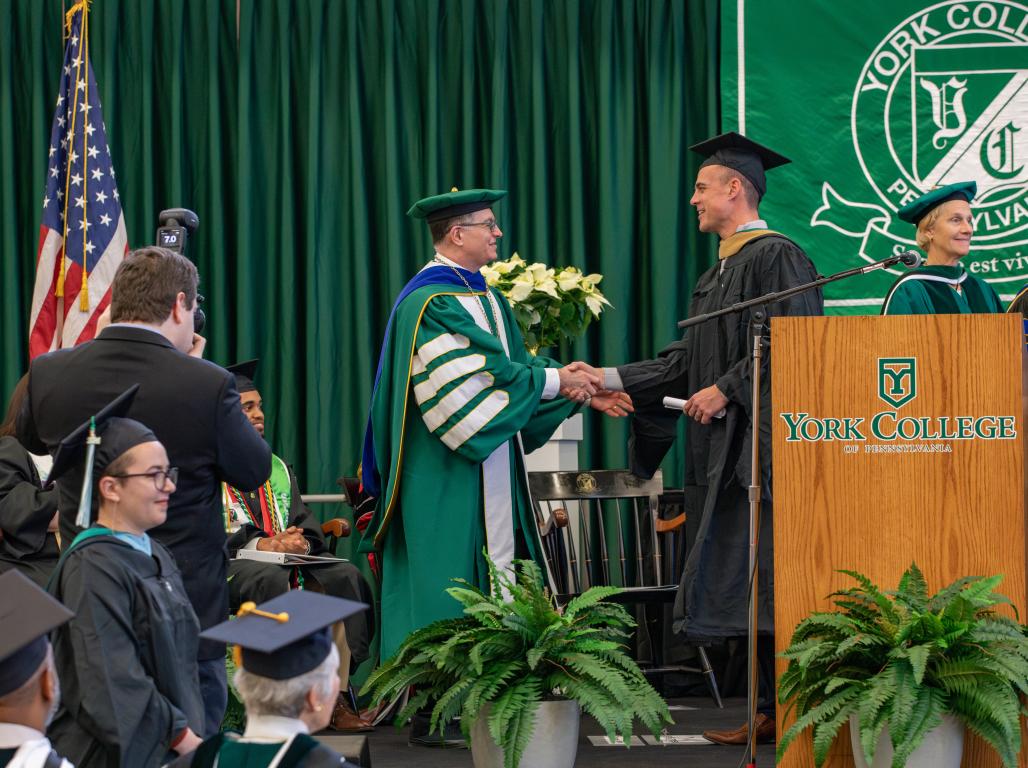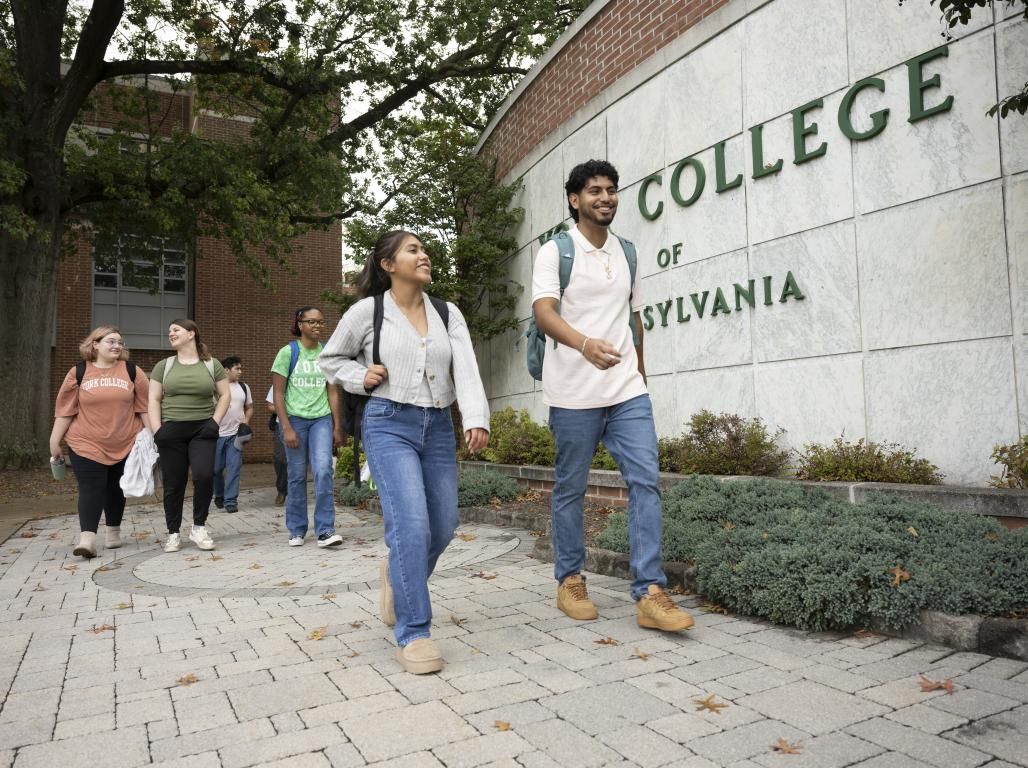Dr. Greg Foy sheds light on the industry’s need for educated chemists
When most new drugs are developed, they undergo a rigorous review process through the Food and Drug Administration (FDA). Scientists study the chemical components of these drugs and research their interactions with biological systems to understand better the impact they might have on human test subjects long before human testing ever begins.
Medical marijuana’s journey to the market has taken an entirely different path. With nearly 40 states offering medical cannabis programs and a growing number moving to legalized cannabis for adult use, there are any number of human test subjects walking around with cannabinoids in their systems, with very little scientific understanding of how and why this chemical interacts with their bodies.
Dr. Greg Foy, professor of chemistry at York College of Pennsylvania (YCP), along with other faculty members in the department, saw the need to produce educated chemists who specialize in the chemical compounds of the cannabis plant—to meet the needs of this exploding industry. Thus, the Cannabis Chemistry major at YCP was born.
“There is a reasonable amount of testing right now, but the standards are inconsistent from state to state,” said Foy. “What we’re trying to do is train good scientists that can engage in testing and research.”
The program was modeled after a college in Michigan, with some insight from similar programs on the West Coast. YCP is paving the way on the East Coast for the technical study of the cannabis plant. Some cannabis science programs broadly cover aspects of the crop, but there are very few that examine the chemicals.
“Any plant has a lot of biological processes associated with it,” Foy explained. “Horticulture and plant science—those focus more on how a plant grows, what it produces, biological pathways…there’s a lot about cells. That’s an applied part of chemistry where they’re very focused on these biological systems, but then you can focus on the chemicals, and that’s more of what we look at in chemistry.”
Chemicals like flavonoids and cannabinoids, including tetrahydrocannabinol (THC), are the kinds of molecules that are most in need of research.
Challenges in researching cannabis
The federal government has classified cannabis as a Schedule 1 drug, which means that it has no medical use. Some scientists disagree with this classification.
“This is a very significant drug. There’s no doubt about it,” said Foy. “There are some great studies—they’re quite limited, though, because of this Schedule 1 [classification]. There are studies that point towards this being an excellent drug for things like PTSD, for cancer patients and nausea, and this list goes on and on and on.”
With so many Americans already using cannabis, medically and recreationally, the need to better understand the chemical components of the plant (and their interactions with our biological systems) is imperative.
“We’re really hopeful that as things get rescheduled that there will be an opportunity for us to work in that area. In the meantime, the proxy is the other plant that is part of the cannabis family, which is hemp.”
Chemically, hemp is the same as cannabis, but it produces less THC—0.3% and below is called hemp, 0.3% and above is marijuana. YCP students use chemistry techniques to study hemp, and apply their findings to real-world questions surrounding cannabis.
The industry’s need for qualified chemistry professionals
Many labs, growers, and manufacturers in the cannabis industry have expressed a growing need for educated scientists to conduct testing to ensure the safety of their products and advance the industry if cannabis becomes rescheduled at the federal level.
“As far as employment, it’s wide open,” Foy said. “The rate of growth of the cannabis industry is incredible and doesn’t show any signs of slowing down. Every election cycle, one or more states have adult use on the ballot, so the outlook for employment in the field is really strong. We’re looking to supply those highly educated scientists.”
Hands-on lab experience for undergraduate students
Foy teaches two courses specific to the cannabis program—quantitative analysis in the fall and instrumental analysis in the spring. Half of each of those courses is devoted to a real-world project.
“One of the students wanted to look at vapes and tinctures of delta-8,” said Foy. Delta-8 is structurally similar to THC, but synthetically derived from Cannabidiol (CBD), which is legally extracted from hemp. “It’s nonregulated because it doesn’t fit the definition of the regulations for cannabis, so we got samples and she’s been doing gravimetric analysis, which means you create a precipitate or a solid. She’s specifically looking for lead.”
The metal absorption properties of hemp are substantial. Understanding these properties could help with environmental cleanup efforts, potentially by cultivating plants at industrial sites to purify the soil. And testing the chemical makeup of delta-8 tinctures is important for keeping consumers safe.
Foy explained, “It’s for the betterment of society to make sure these products are safe and aren’t contaminated with outside sources. These plants are great at uptaking these heavy metals, so it shouldn’t be surprising that there are heavy metals in these delta-8 products because they don’t have any real regulation that I know of. At least the delta-9 in medical states and adult-use states—there are requirements for testing and what they have to report.”
Potential cannabis research outcomes
From finding new treatments for PTSD to environmental revitalization, the possibilities seem endless. YCP students are looking at hemp fibers to see how well they absorb zinc, silver, and lead. If the harvested plant has the ability to absorb these metals, it could be used for water treatment and more.
“What we really need is to get the complete profile of the plant from a chemical perspective, from a biological perspective, from a pharmacological perspective,” said Foy. “We need to know when you refine all these different compounds within it—what else is in that refined product, and how is that going to behave? Right now, the problem with the research is there’s such limited information—we don’t know exactly how they’re behaving. But within the human body, there’s an endocannabinoid system. Our body is set to receive cannabinoids, otherwise we wouldn’t have this endocannabinoid system, so we need to investigate that and figure out: What are the pathways? What are the mechanisms for any kind of medical treatments?”
Foy is hopeful that by training students in the technical study of chemistry, answers to these questions can emerge.
“There’s a lot of scientific work that needs to be done. We’re not saying that we’re going to do all of it. You just generally need scientists who have knowledge of what’s going on here to disseminate information about what’s going on with this plant and this product,” he said.
The reclassification of marijuana is making its way through federal regulators and will hopefully lift restrictions on research parameters soon, opening the doors for more research—ultimately finding answers about how cannabis affects the human body, the environment, and more.





